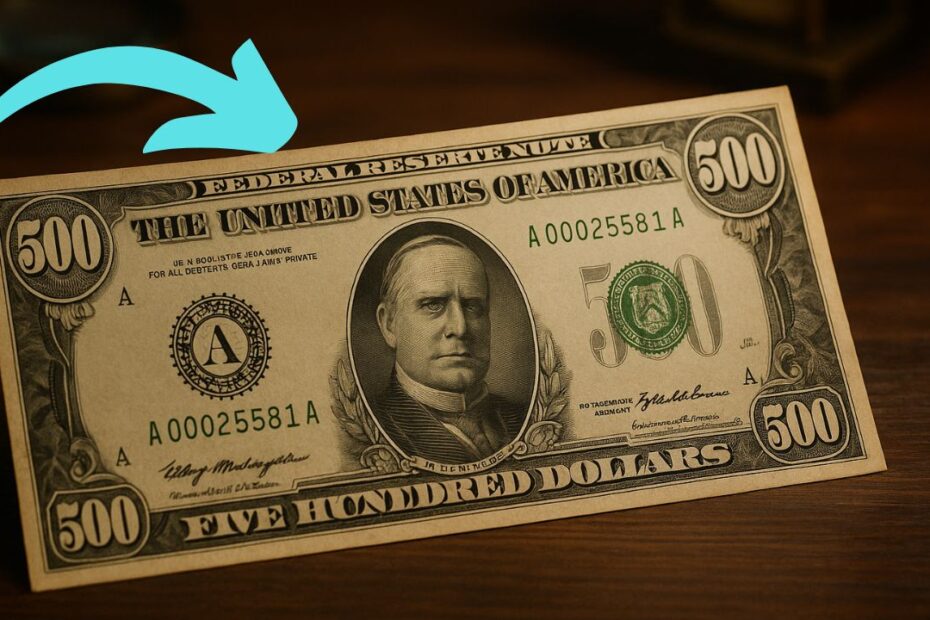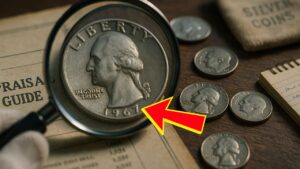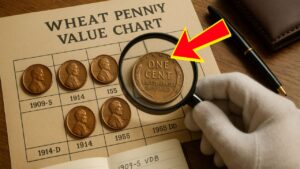The $500 bill of the United States is a piece of monetary history that captures fascination and nostalgia.
Though no longer seen in everyday transactions, this high-denomination note remains a legal tender, cherished by collectors and historians alike.
In this comprehensive article, we’ll explore its history, design, legal status, survival rate, collector value, and more—presented in clear, engaging detail.
Historical Background
- The $500 bill was first issued in 1861 by the U.S. Bureau of Engraving and Printing, amid the Civil War era. Early versions featured prominent figures like Albert Gallatin.
- From 1918, a large-size note featured Chief Justice John Marshall on the obverse.
- Starting in 1928, redesigned smaller-size notes sported President William McKinley on the front, with simpler reverse designs prominently displaying the denomination. These were reissued in the 1934 series.
- Production of the bill ceased in 1945, and by July 14, 1969, the Federal Reserve and Treasury formally discontinued it, requiring banks to send any remaining notes back for destruction—though the note remained legal tender.
- Since then, only specimens found in private collections, museums, or auction houses survive. It is estimated that fewer than 75,000 $500 bills still exist in collector hands worldwide.
- Interestingly, in 2025, a legislative proposal floated a plan to issue a new $500 note featuring a modern figure.
Design & Physical Details
- Size & Format: The smaller-size $500 notes (1928, 1934) measure approximately 6.14 × 2.61 inches, identical to modern U.S. currency.
- Portraits:
- 1918 large-size note: Chief Justice John Marshall.
- 1928 & 1934 small-size notes: President William McKinley.
- Reverse Imagery:
- The large-size note depicted Hernando de Soto discovering the Mississippi River.
- The small-size version adopted a minimalist reverse with a large “FIVE HUNDRED DOLLARS” text layout.
- Seal Types:
- Early versions featured colorful blue or green seals and distinct border patterns, depending on the series.
Legal Status & Rarity
- Legal Tender: Despite being discontinued since 1969, $500 notes remain legal tender and can technically be used for transactions—although doing so would be financially unwise, as collectors value them far above face value.
- Circulation Today:
- By 2024, total U.S. currency in circulation included a tiny fraction (about 0.0004 billion dollars) in denominations of $500 to $10,000, reflecting their extreme rarity.
Collector Value & Market Trends
- General Value Range: Common $500 bills in average condition typically fetch $600–$2,000, depending on series, seal, and condition.
- Pristine Specimens: Flawless examples have fetched more than $20,000 in recent auctions.
- Rarer Varieties:
- Gold certificate versions or star-note 1928 issues can command prices in the tens of thousands, occasionally even higher.
- Historical Purchasing Power:
- In the early 20th century, a $500 bill could buy over 24 ounces of gold. In 2024, it buys just about 0.22 ounces, illustrating inflation’s effect on purchasing power.
Quick Reference – $500 Bill Facts
| Aspect | Details |
|---|---|
| First Issued | 1861 (Civil War era) |
| Large-Size Portrait | Chief Justice John Marshall (1918 series) |
| Small-Size Portraits | President William McKinley (1928 & 1934 series) |
| Ceased Printing | 1945 |
| Officially Discontinued | July 14, 1969 |
| Legal Tender Status | Still legal, but withdrawn from circulation |
| Estimated Surviving Notes | Fewer than 75,000 in private collections |
| Typical Collector Value | $600–$2,000+ (common) |
| Premium Specimens | $20,000+ (pristine), rarer types much more |
| Size (small-size) | ~6.14 × 2.61 inches (same as modern US bills) |
| Reverse Imagery | Large-size: de Soto’s discovery; small-size: “FIVE HUNDRED DOLLARS” text |
Why Study the $500 Bill?
- Numismatic Significance: It links the era of high-denomination physical currency with the rise of electronic banking.
- Historical Insight: Reflects economic trends like inflation and shifts in how wealth was transferred.
- Investment Appeal: With increasing rarity and collector demand, many view these notes as valuable investments.
The $500 bill arises as a captivating emblem of American monetary history—a symbol of bygone eras when large-denomination physical currency played a far more prominent role in financial systems.
With figures like Chief Justice John Marshall and President William McKinley gracing its designs, this note weaves politics and economics together in an elegant, tangible artifact.
Though no longer circulating, its legacy endures—both in rare collections and the stories it carries about the past.
Frequently Asked Questions
Is the $500 bill still legal tender?
Yes—the $500 note remains legally valid, even though it was discontinued in 1969 and is no longer in general circulation.
How much is a $500 bill worth today?
Typical $500 notes in circulated but good condition may sell for $600–$2,000; pristine or rare varieties—such as star notes or gold certificates—can fetch $20,000 or more.
How many $500 bills still exist?
It’s estimated that fewer than 75,000 $500 bills exist today, most in private collections, museums, or auction houses.



